The Port Washington Branch of the Long Island Railroad, your webmaster’s home railroad line, is a line capable of the finest the LIRR can offer and its very worst, with brand spanking new and restored station houses with all the amenities, and the highest railroad bridge on the Island. In 2002, I surveyed the line and found decrepit, crumbling stations that the NYC Comptroller’s Office have described as downright dangerous.
Fortunately. in the intervening years the LIRR went on a rebuilding program, completely renovating the Bayside, Auburndale, Broadway, Murray Hill and even the Mets-Willets Point stations, and by 2010 the Port Washington could take its place as what could be the LIRR’s flagship line. The only blemish remains the Flushing-Main Street station, which is accessible only via two metal staircases in dirty, crowded conditions, and the open cut through Murray Hill, which is treated as a dump by local denizens.
The railroad that ultimately became the Port Washington Branch was borne from two competing railroads, the Flushing Railroad (later the New York and Flushing) which incorporated as early as 1852 and ran from Hunter’s Point to Flushing along a route quite similar to today’s line, and the Flushing and North Side Railroad, built by ‘rubber baron’ Conrad Poppenhusen and extending to Great Neck by 1866. Poppenhusen would later take over the Long Island Railroad by 1876, but it foundered and by 1880 it was in the hands of who may have been its greatest president, Austin Corbin. By 1889 all the railroads in competition for service in northern Queens County were under the control of the Long Island.
In recent years, one thing has become clear in Long Island Railroad operations: those stations closer to New York City get the short end of the stick as far as maintenance and upkeep go, with ever more care, planning and service going to those suburban Nassau and Suffolk County stations that are the railroad’s bread and butter. Nowhere is this clearer than on the Port Washington, where the differences are stark indeed.
The Port Washington branch, as well as the LIRR main line, underwent a drastic change between 1912 and 1915. To eliminate most of the grade crossings, the Port was relocated, placed on an embankment and given several handsome elevated crossings, such as this one on Queens Boulevard, itself a brand new grand thoroughfare in the early 1910s. NYC had taken a dirt road known as Hoffman Boulevard and given it a massive steroid injection, causing it to grow several traffic lanes.
The Port Washington branch crosses Queens Boulevard twice…once in tandem with the LIRR Main Line, which it diverges from at 48th Avenue and 70th Street, and then again just east of the mostly-unused Conrail line, which these days sees freight service about once a week, but at least crosses Queens Boulevard in style, with a beautiful arched bridge, which can be seen in the background of the picture at right.
Several masonry bridges, such as these, were built when the Port Washington Branch’s grade crossings were eliminated between 1912 and 1915.
In the 1850s, the Flushing and North Side Railroad had gained a small station at Winfield, a now-forgotten neighborhood concentrated between Queens Boulevard and Maurice Avenue in what is now 58th-69th Street. After the relocation of the tracks in 1915, Winfield Station was relocated to about 48th Avenue and 69th Street–just east of where the Port Washington joins the Main Line– and survived till about 1929. No trace of Winfield remains today.
A second abandoned station along the Port Washington Branch was Elmhurst, just east of Broadway. LIRR historian Bob Andersen claims that Elmhurst closed as recently as 1985, but Ron Ziel claims its distinctive station house was torn down as early as 1927.
The Port Washington Branch crosses Broadway between Whitney and Cornish Avenues.
The flange-shaped items along the trestle formerly held part of the Elmhurst station platform.
Several clues point to Elmhurst’s former presence, though. Concrete abutments that formerly held platforms can still be seen along Whitney Avenue east of Broadway.
Passenger crossunders are rare in the Long Island Railroad except where they are associated with stations. The presence of one here, linking Whitney and 43rd Avenues and 88th Street on the southern side of the tracks, may be yet more evidence of the old Elmhurst Station.
1909 view of the Elmhurst station, where Broadway crossed at grade. The LIRR would be elevated here at about 1913. Photo courtesy Andrew Beirne
Just east of the old Elmhurst station and the 91st Place overpass, a trace of the Port Washington Branch’s old freight operations can be seen. On the eastbound track, another track branches off and lines up with the loading dock of an industrial building, the old Durkee spice factory, built in 1917 facing on Corona Avenue.
Goods were loaded off freight trains onto the loading dock (seen above). These days the dock is used for vehicle parking. The old side track can be seen in this view from 94th Street underneath the customary mound of garbage deposited by area residents from the pedestrian overpass.
View from 94th Street
2007: The Durkee factory has been gutted and has been converted into a middle school.
Old Elmhurst, in December 2007, posted several post card shots of the Durkee building when first opened.
1920s view of the Durkee spice factory, with its LIRR siding at right. Picture courtesy Andrew Beirne.
The Port Washington Branch also had a station at Corona, where National Street (named for a horse…that’s right, a horse; National Race Course, named for a champion race horse, was here from 1856 to 1866) runs past the line. The original Corona station dated to 1853; its last station house was torn down in 1930 although the station itself did not meet its demise until 1963. The present day station closest to Corona is the United Nations/World’s Fair/Shea Stadium station, which is open only during events held at Shea.
It’s likely that the steps up to the platforms were in the indents along the station wall. The overpass dates to 1930, as the stamped date shows. The elevated station stood between 1930 and 1963.
The Tiffany glass factory, still standing on 97th Place between 43rd and 44th Avenues, can be seen at the far left in this view of Corona Station in 1900.
[the factory was demolished in 2013 and replaced with a school]
The newly-constructed Corona elevated platform in 1930. photos from The Story of Corona by Vincent Seyfried
A ramp (in disrepair in 2002) leads to the tracks from 44th Avenue at 97th Place.
Along the Port Washington line, milestones can be seen alongside the south side of the tracks. This is the 6th milestone on 45th Avenue in Corona; I have also noted milestones at the 5th, 9th, 10th, 11th and 12th miles. I don’t know if they measure the distance from Penn Station or the East River.
Mets-Willets Point
There are extensive layup tracks on the Port Washington Branch at Shea Stadium, but these get a lot of use only in the spring, when the circus is in town, and late summer, when the US Tennis Open comes to Flushing Meadows. The station is only open for sporting events. It was built in the 1930s when Flushing Meadows played host to the first World’s Fair and later, the United Nations. By 2008 it had been severely neglected, but it was spiffed up when Citifield opened the next year. The station is still not handicapped-accessible.
In September 1999, before their retirement, the last of the LIRR MP50 push-pull units paid a visit to the Port Washington Branch, where they had rarely been seen. Here they are at the Shea Stadium station. A flock of R33 ‘redbirds’ await call to service in the background in the Corona Yards. Both the MPs and Redbirds have now been retired.
The ticket window is accessible from the overpass (Passerelle Boardwalk) over the Corona Yards.
The last vestige of the old LIRR Whitestone Branch can be seen from the Shea Stadium platform. The line was built by Conrad Poppenhusen in 1869 and ran to the East River at about where 10th Avenue and 154th Street are presently. The line was shut down during the Depression in 1932. The LIRR offered to sell it to the city, which could have gained a new subway branch with a connection to the Flushing Line, but the city refused the sale.
Flushing Main Street
The Port Washington crosses Main Street on this overpass built in 1913. Believe it or not, the line used to run at grade and even went through a tunnel under a girls’ school just east of this photograph. The tunnel and the school were torn down to build the overpass and the open cut the line now runs through.
The small Flushing Main Street station house. Photo: Bob Andersen
The Flushing-Main Street station is on a rather high overpass with only one exit each on the east and westbound sides, at the eastern edge of the platform. To exit the station, you have to go down a staircase and brave the extremely dense foot traffic on Main Street; the sidewalk is also obstructed by the concrete stanchion holding up the overpass.
Murray Hill
This was the Murray Hill station in the 1950s. When the PW Branch was depressed into an open cut here in 1913, it was given this wide triple-roofed structure on the overpass at 149th Street. It came down in 1964; since then, there has been no station house at Murray Hill.
Since 1913 the Murray Hill station has been the most urban-looking of the Port Washington Branch’s stations; it resembles some of the stations on the BMT Sea Beach line. The station was completely overhauled in the summer of 2005, with a completely new pedestrian overpass, landscaping, lighting and even new bicycle racks.
Before 2005 Murray Hill was an accident waiting to happen, with crumbling pavements and exposed, dripping pipes.
The Murray Hill open cut, as seen from the Bowne Street overpass.
Since then Murray Hill is much improved, though it’s hard to keep the graffiti vandals at bay with these exposed walls. Murray Hill is also much shorter than other branch stations, so four cars on most trainsets cannot platform.
Flushing? You betcha. A little east of Murray Hill, this is Depot Road (as opposed to ‘de rich roads’ the PW Branch runs along further east). A little imagination, and you’re back in the 1860s, when the line was first run here through farmland.
The 158th Street underpass is a vital link for traffic north and south of the line. Several years ago, murals were painted on each side. The NO DUMPING sign in the center lends that needed pinch of urban panache.
Broadway
Moving further east, the Port Washington Broadway station has a lengthy overpass over Northern Boulevard (called “Broadway” when the line first came here in the 1860s) that is definitely cut from the same cloth as the Queens Boulevard overpass (see top of page). Both bridges are quite lengthy since they cross their boulevards at a diagonal.
The line formerly ran here at grade until 1913.Both Northern Boulevard and 162nd Street were subsequently depressed to allow truck traffic to run under the overpasses.
The Port Washington rumbles over Northern Boulevard. Several miles to the east, the Oyster Bay Branch crosses Northern Boulevard in Roslyn. The LIRR crosses the boulevard four times.
Broadway has a handsome station that was built in 1906, predating the line’s placement on an embankment here in 1913. The station house was completely renovated in 2003 and the rest of the station from 2003-2009.
The crumbling section of the platform, with the tin shack, was closed for a couple of years before the renovation.
This waiting room on the eastbound platform may have at one time been a freight station. It does have an unused chimney (unseen in the picture) and may at one time have had a fireplace. The benches are cracking, the paint is peeling and the interior woodwork is exposed. The streaks on the wall are from graffiti that LIRR cleaning service renders into paint smears. The LIRR long ago gave up on glass windows…these are plexiglass; vandals would immediately attack any glass here.
This was demolished when Broadway was rebuilt.
Broadway had unique concrete and metal railings that were discarded in favor of metal ones during the station rebuild. Similar railings can still be seen at Hollis on the Main Line.
Enamel sign on a Broadway station underpass. This was discared after renovations.
Here’s a look at Broadway after the rehabilitation.

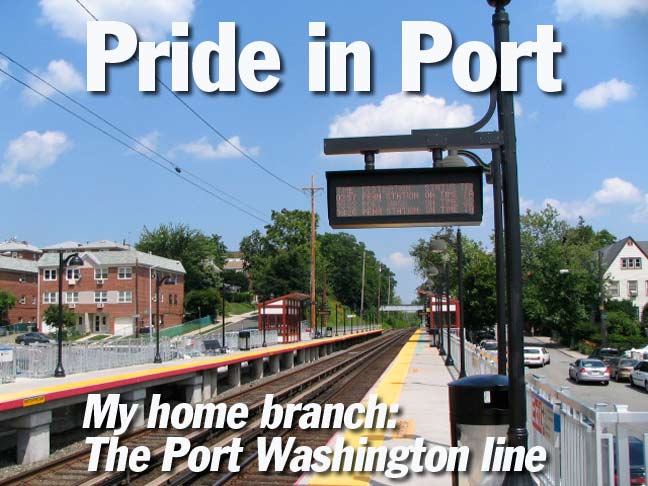

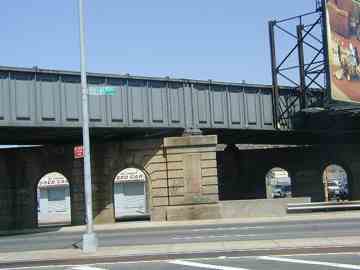

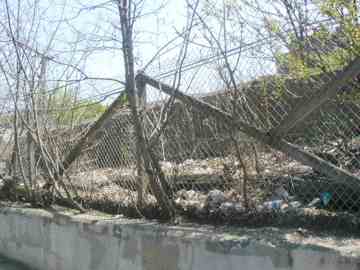
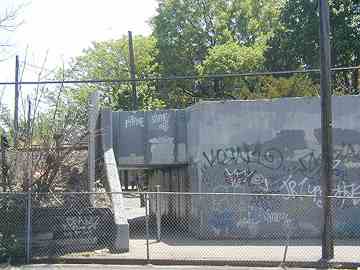
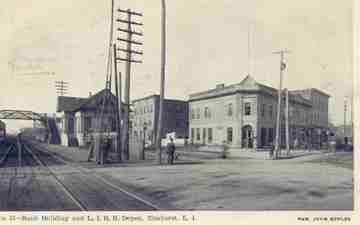


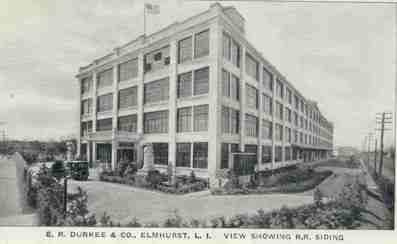

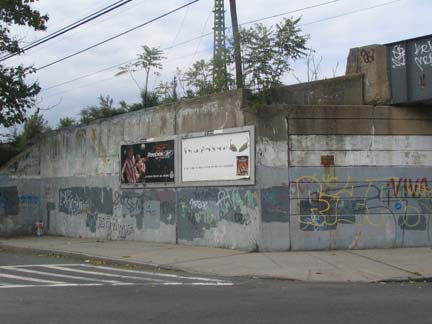

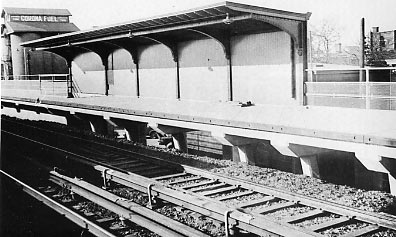
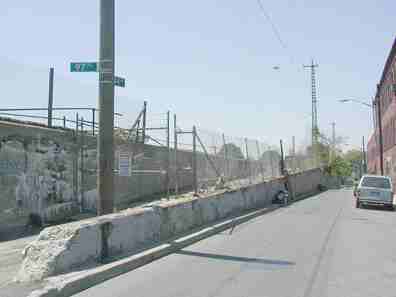
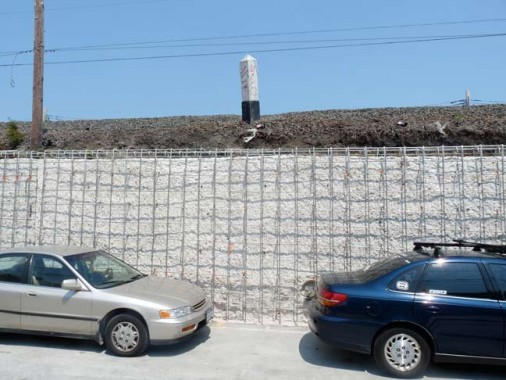

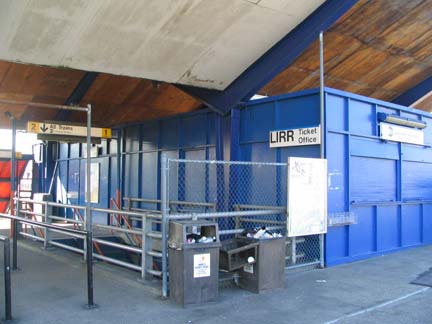

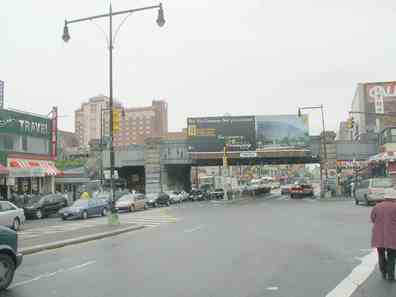
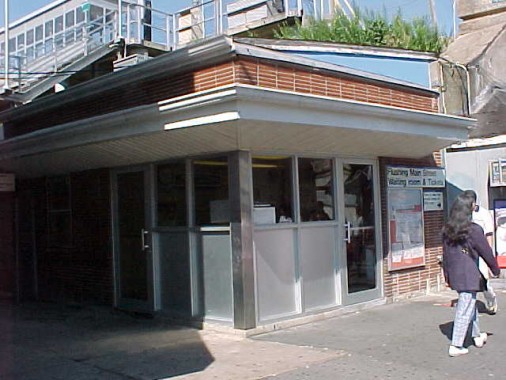
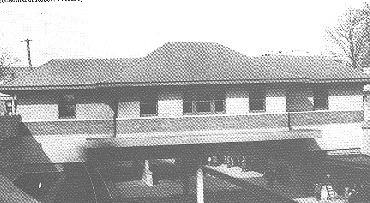
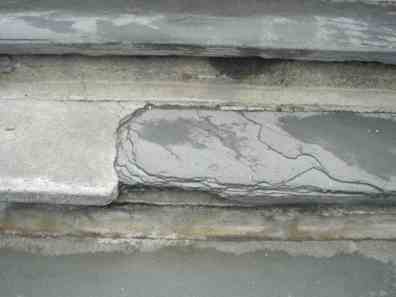



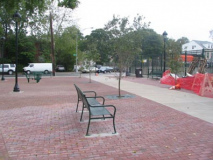
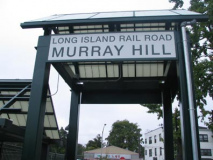
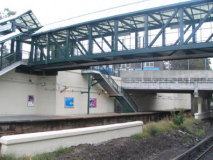
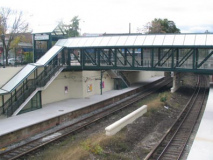
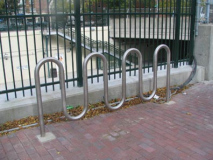
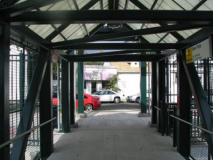
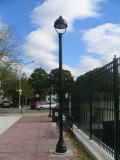
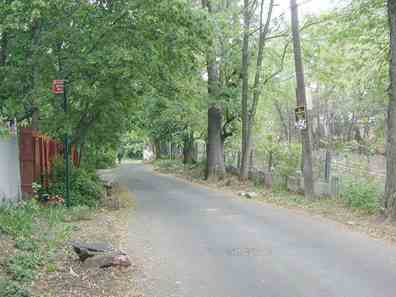
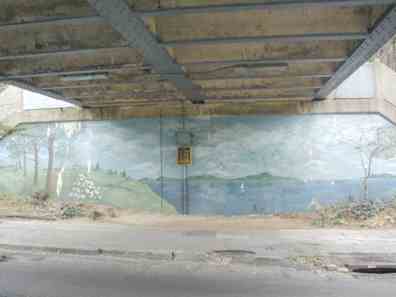
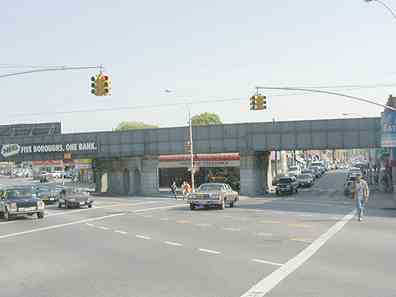
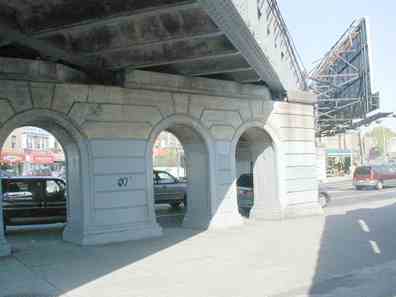
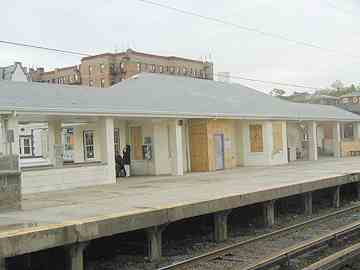
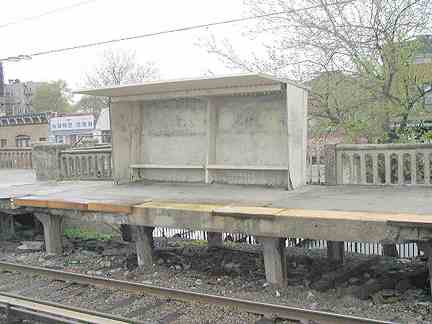
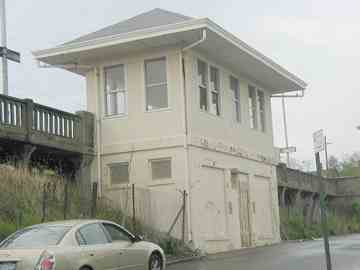


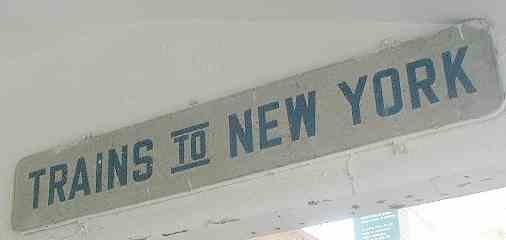
2 comments
The Elmhurst Station platform (no station building) was open and operating until 1985. I moved into Elmhurst in 1981, and used the Port Washington Branch to visit my parents in Broadway Flushing for the first few years I lived here.
Hi Kevin:
I grew up in Corona during the early 1950s. Just as a clarification, a comment for the photo that states: “A ramp (in disrepair in 2002) leads to the tracks from 44th Avenue at 97th Place”. That ramp was actually a non-electrified railroad siding that led to the “Corona Fuel” silo visible in the Corona station photo in the immediately preceding photograph. The Corona Fuel Company was located in a lot on the opposite (North) side of 44th Avenue from the railroad trestle. I greatly enjoy your website. Thank You so much for your passion in keeping the history of New York City alive. Your work is documentation of history truly worth remembering.